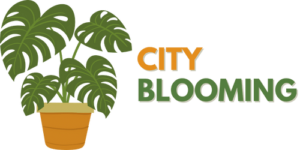The Main Principles Of City Blooming
The Main Principles Of City Blooming
Blog Article
9 Easy Facts About City Blooming Explained
Table of ContentsRumored Buzz on City BloomingThe Ultimate Guide To City BloomingCity Blooming Things To Know Before You BuyIndicators on City Blooming You Need To KnowA Biased View of City Blooming
Intrigued in growing food for sale in the City of Chicago? Below is a list of frequently asked questions concerning the policies and laws that cultivators need to consider when planning a city agriculture project.
The zoning modification does not customize any kind of various other codes dealing with composting, structure licenses, purchasing or renting City owned building, company licenses or ecological contamination. There are existing codes that control these problems and they remain completely effect and may apply to your project. Community gardens are commonly possessed or managed by public entities, civic companies or community-based companies and maintained by volunteers.
Urban farms grow food that is meant to be marketed, either on a nonprofit or for-profit basis. As a result of their business function, city ranches call for an organization certificate. Yes. An area yard is allowed to sell surplus produce that was expanded on site if the sales are accessory or subordinate to the garden's main function explained above.
Little Known Facts About City Blooming.
The quantity of compost product can not go beyond 25 cubic backyards at any provided time according to the requirements in 7-28-715 of the City's Municipal Code. Because the dirt at a lot of new garden sites requires changing, compost, soil, wood chips, or various other products can be acquired to build or boost the expanding space.

If a structure authorization is required then the hoophouse will be taken into consideration an accessory building. You can learn even more regarding the structure authorization demands by calling the Division of Structures. The 25,000-square-foot size restriction is meant to stop a single neighborhood garden from controling a given block or interfering with the block's existing domestic or commercial personality.
The restriction does not use to gardens located in Public Open Room (POS) districts. Can there be more than one neighborhood garden that is 25,000 square feet on a single block? Fence is not needed, nonetheless, gardens that have big parking areas might be needed to install fence or other landscaping features.
Top Guidelines Of City Blooming
B1 & B2 areas call for that all business usage tasks be carried out inside. Is fencing needed for metropolitan farms? Fencings may be required, along with landscaping and testing, for specific car parking locations and outdoor job or storage locations depending on area and the certain activity taking area.
Urban farms call for building licenses and zoning authorizations prior to building and construction you could try these out (urban gardening). Other types of city evaluation might be needed depending on specific structures, tasks, dimension, landscaping, licensing, public health and stormwater monitoring concerns.
The Department of Organization Matters and Customer Security can assist figure out the specific kind of company permit that's required. Off road auto parking is needed for a lot of business jobs in Chicago. The called for number of car park rooms is based on the number of workers functioning on website and not the square footage of the growing space.
Not known Details About City Blooming

An urban farm can sell garden compost material generated on website, however, the procedure should conform with the policies in 7-28-715 of the Chicago Municipal Code. Aquaponic systems are allowed inside on city ranches in numerous zoning areas.
Up to five hives or colonies of honey might be kept as an accessory usage. Nonetheless, beekeepers have to register with the Illinois Division of Agriculture. For more details about the recommended zoning change you might call the Division of Housing and Economic Advancement, Bureau of Planning and Zoning at 312.744.8563.
Farming in cities and urban areas A city ranch in Chicago. Urban agriculture describes different practices of growing. https://penzu.com/p/e1495b371b86caaf, processing, and distributing food in city locations. The term additionally puts on the area tasks of pet husbandry, tank farming, beekeeping, and cultivation in a city context. Urban agriculture is differentiated from peri-urban agriculture, which happens in rural locations at the side of suburban areas.
Not known Factual Statements About City Blooming
, that look for to create social networks started on a common ethos of nature and neighborhood holism. These networks can develop by method of official institutional assistance, becoming integrated right into regional town preparation as a "shift town" activity for lasting city development.
Some of the very first proof of metropolitan farming comes from Mesopotamia.
Report this page